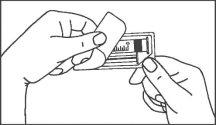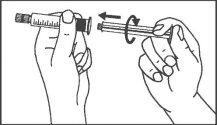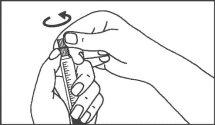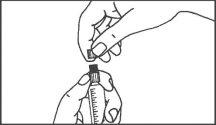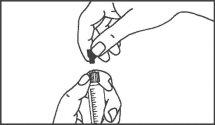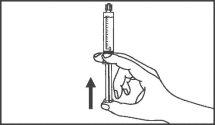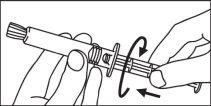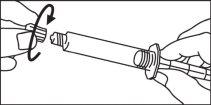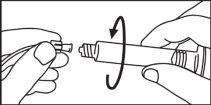
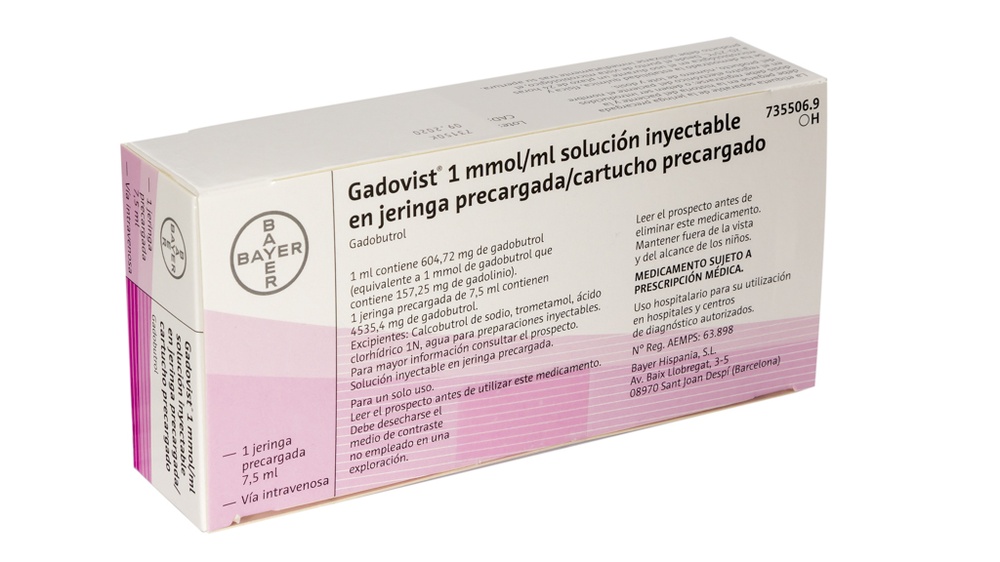
ГАДОВИСТ 1 ммоль/мл РАСТВОР ДЛЯ ИНЪЕКЦИЙ В ПРЕДНАПОЛНЕННОМ ШПРИЦЕ/ПРЕДНАПОЛНЕННОМ КАРТРИДЖЕ

Спросите врача о рецепте на ГАДОВИСТ 1 ммоль/мл РАСТВОР ДЛЯ ИНЪЕКЦИЙ В ПРЕДНАПОЛНЕННОМ ШПРИЦЕ/ПРЕДНАПОЛНЕННОМ КАРТРИДЖЕ

Инструкция по применению ГАДОВИСТ 1 ммоль/мл РАСТВОР ДЛЯ ИНЪЕКЦИЙ В ПРЕДНАПОЛНЕННОМ ШПРИЦЕ/ПРЕДНАПОЛНЕННОМ КАРТРИДЖЕ
Введение
Инструкция:информация для пациента
Гадовист 1 ммоль/мл раствор для инъекций в предварительно заполненном шприце/
предварительно заполненный картридж
Гадобутрол
Прочитайте внимательно всю инструкцию перед началом использования этого лекарства,поскольку она содержит важную информацию для вас.
- Сохраните эту инструкцию, поскольку вам может потребоваться перечитать ее.
- Если у вас есть какие-либо вопросы, проконсультируйтесь с вашим врачом или человеком, который вводит Гадовист (радиологом) или персоналом больницы или центра, где проводится МРТ (магнитно-резонансная томография).
- Если вы испытываете побочные эффекты, проконсультируйтесь с вашим врачом или радиологом, даже если это побочные эффекты, которые не указаны в этой инструкции. См. раздел 4.
Содержание инструкции
- Что такое Гадовист и для чего он используется
- Что вам нужно знать перед началом использования Гадовиста
- Как использовать Гадовист
- Возможные побочные эффекты
- Хранение Гадовиста
- Содержание упаковки и дополнительная информация
1. Что такое Гадовист и для чего он используется
Гадовист - это контрастное средство для магнитно-резонансной томографии (МРТ), используемое для диагностики мозга, позвоночника и кровеносных сосудов. Гадовист также может помочь врачу определить тип аномалий (доброкачественных или злокачественных) в печени и почках.
Гадовист также может быть использован для МРТ аномалий других частей тела. Он облегчает визуализацию аномальных структур или поражений и помогает в различении здоровой и больной ткани.
Он показан взрослым и детям всех возрастов (включая новорожденных).
Как работает Гадовист
МРТ - это метод диагностики, который использует поведение молекул воды в нормальных и аномальных тканях. Это осуществляется с помощью сложной системы магнитов и радиоволн. Компьютеры регистрируют активность и преобразуют ее в изображения.
Гадовист вводится через вену. Это лекарство предназначено только для диагностического использования и вводится только медицинским работником с опытом в клинической практике МРТ.
2. Что вам нужно знать перед началом использования Гадовиста
Не используйте Гадовист, если вы
- аллергичны к гадобутролю или любому другому компоненту этого лекарства (указанному в разделе 6).
Предостережения и меры предосторожности
Проконсультируйтесь с вашим врачом перед началом использования Гадовиста, если вы
- страдаете аллергией (например, сенной лихорадкой, крапивницей) или астмой
- имели ранее реакцию на любое контрастное средство
- имеете тяжелую почечную недостаточность
- страдаете церебральными расстройствами с судорогами (припадками) или другими заболеваниями нервной системы
- имеете кардиостимулятор или любой имплантат или клип, содержащий железо в вашем теле.
Ваш врач решит, возможно ли провести запланированное исследование.
- Могут возникать аллергические реакции или другие типы реакций, которые приводят к сердечным проблемам, затруднению дыхания или кожным реакциям после использования Гадовиста. Возможно, что возникнут тяжелые реакции. Большинство этих реакций возникает в течение 30 минут после введения Гадовиста. Поэтому вас будут наблюдать после лечения. Были зафиксированы задержанные реакции (после нескольких часов или дней) (см. раздел 4).
Почки/Печень
Сообщите вашему врачу, если
- ваши почки не функционируют правильно
- если вам最近 была сделана или скоро будет сделана трансплантация печени.
Ваш врач может решить провести анализ крови для проверки правильной функции ваших почек перед решением о использовании Гадовиста, особенно если вам 65 лет или старше.
Новорожденныеи грудные дети
Из-за незрелости почечной функции у новорожденных до 4 недель и грудных детей до 1 года Гадовист должен использоваться у этих пациентов только после тщательной оценки врачом.
Другие лекарства и Гадовист
Сообщите вашему врачу или фармацевту, если вы используете,最近 использовали или можете использовать любое другое лекарство.
Беременность и лактация
Если вы беременны или кормите грудью, считаете, что можете быть беременной или планируете стать беременной, проконсультируйтесь с вашим врачом или фармацевтом перед использованием этого лекарства.
- Беременность
Гадобутрол может проникать через плаценту. Неизвестно, влияет ли он на плод. Вы должны сообщить вашему врачу, если считаете, что вы беременны или можете быть беременной, поскольку Гадовист не должен использоваться во время беременности, если только это не абсолютно необходимо.
- Лактация
Сообщите вашему врачу, если вы кормите грудью или собираетесь начать кормить. Ваш врач оценит, должны ли вы продолжать кормить или должны ли вы прервать лактацию в течение 24 часов после введения Гадовиста.
Гадовист содержит натрий
Это лекарство содержит менее 23 мг натрия на дозу (на основе средней дозы, введенной человеку весом 70 кг); это означает, что оно практически "не содержит натрия".
3. Как использовать Гадовист
Гадовист вводится медицинским работником через небольшую иглу в вену. Ваше исследование МРТ может начаться сразу же.
После введения вы будете находиться под наблюдением в течение как минимум 30 минут.
Обычная дозировка
Обычная доза, подходящая для вас, будет зависеть от вашего веса и исследуемой области МРТ:
У взрослыхрекомендуется однократное введение 0,1 мл Гадовиста на кг веса (это означает, что для человека весом 70 кг доза будет составлять 7 мл), однако может быть введена дополнительная доза до 0,2 мл на кг веса в течение 30 минут после первой дозы. Может быть введена общая доза до 0,3 мл Гадовиста на кг веса (это означает, что для человека весом 70 кг доза будет составлять 21 мл) для получения изображений центральной нервной системы (ЦНС) и магнитно-резонансной ангиографии (МРА) с контрастом. Может быть введена минимальная доза 0,075 мл Гадовиста на кг веса (это означает, что для человека весом 70 кг доза будет составлять 5,25 мл) для ЦНС.
В конце инструкции приведена дополнительная информация об введении и обращении с Гадовистом.
Дозировка у особых групп населения
Использование Гадовиста не рекомендуется у пациентов с тяжелыми почечными расстройствами или у пациентов, которымrecently была сделана или скоро будет сделана трансплантация печени. Однако, если требуется использование, во время исследования должно быть введено только одно введение Гадовиста, и не должно быть введено второе введение до тех пор, пока не пройдут как минимум 7 дней.
Использование уноворожденных, грудных детей,детей и подростков
Рекомендуемая доза у детей всех возрастов (включая новорожденных) составляет однократное введение 0,1 мл Гадовиста на кг веса для всех показаний (см. раздел 1).
Из-за незрелости почечной функции у новорожденных до 4 недель и грудных детей до 1 года Гадовист должен использоваться у этих пациентов только после тщательной оценки врачом. Новорожденные и грудные дети должны получать только одну дозу Гадовиста во время исследования и не должны получать второе введение до тех пор, пока не пройдут как минимум 7 дней.
Пациенты пожилого возраста
Если вам 65 лет или старше, не требуется коррекция дозы, но может быть проведен анализ крови для проверки правильной функции ваших почек.
Если вы используете больше Гадовиста, чем необходимо
Маловероятно, что произойдет передозировка. Если это произойдет, врач будет лечить все симптомы и может использовать диализ для удаления Гадовиста из вашего организма. Нет доказательств, которые бы указывали на то, что гемодиализ подходит для предотвращения развития нефрогенной системной фиброзы (НСФ; см. раздел 4), поэтому он не должен использоваться для лечения этого заболевания. В некоторых случаях будет контролироваться ваше сердце.
В случае передозировки или случайного приема проконсультируйтесь с токсикологической службой (телефон 91 562 04 20).
Если у вас есть какие-либо другие вопросы об использовании этого лекарства, проконсультируйтесь с вашим врачом или радиологом.
4. Возможные побочные эффекты
Как и все лекарства, это лекарство может вызывать побочные эффекты, хотя не все люди испытывают их. Большинство этих реакций возникает в течение 30 минут после введения Гадовиста. Были зафиксированы редкие случаи задержанных аллергических реакций или других типов реакций, которые возникают через несколько часов или дней после приема Гадовиста. Если это произойдет с вами, немедленно сообщите вашему врачу или радиологу.
Самые тяжелые побочные эффекты(которые были фатальными или представляли угрозу для жизни в некоторых случаях) являются:
- остановка сердечного ритма (останова сердца) тяжелое легочное заболевание (синдром острого респираторного дистресса) / жидкость в легких (пульмональный эдем) и тяжелые аллергические реакции (анafilactoides) (включая остановку дыхания и шок).
Кроме того, в некоторых случаях были зафиксированы следующие побочные эффекты, которые представляли угрозу для жизни или были фатальными:
- отсутствие дыхания (диспноэ), потеря сознания, тяжелые аллергические реакции, сильное снижение артериального давления, которое может привести к коллапсу, остановка дыхания, жидкость в легких, воспаление рта и горла и снижение артериального давления.
В редких случаях:
- могут возникать аллергические реакции(гиперчувствительность и анафилаксия), включая тяжелые реакции (шок), которые могут потребовать немедленного медицинского вмешательства.
Если вы заметите:
- воспаление лица, губ, языка или горла
- кашель и чихание
- затруднение дыхания
- зуд
- заложенность носа
- крапивница (сиполнка, подобная той, которую вызывает крапива)
немедленно сообщите персоналу отделения МРТ.Это могут быть первые признаки того, что происходит тяжелая реакция. Ваше исследование может быть приостановлено, и вам может потребоваться дальнейшее лечение.
Наиболее часто встречающиеся побочные эффекты(которые могут возникать у 5 или более из 1000 человек) являются:
- головные боли, чувство дискомфорта (тошнота) и головокружение.
Большинство побочных эффектов являются легкими или умеренными.
Ниже перечислены возможные побочные эффекты, которые были зафиксированы в клинических испытанияхдо утверждения Гадовиста по их вероятности:
Частые:могут возникать у до 1 из 10 человек
- головная боль
- чувство дискомфорта (тошнота)
Нечастые:могут возникать у до 1 из 100 человек
- аллергическая реакция, например:
- снижение артериального давления
- крапивница
- воспаление лица
- воспаление (отек) век
- покраснение
Частота следующих аллергических реакций неизвестна:
- тяжелая аллергическая реакция (анафилактоидный шок)
- сильное снижение артериального давления, которое может привести к коллапсу (шок)
- остановка дыхания
- затруднение дыхания (бронхоспазм)
- посинение губ
- воспаление рта и горла
- воспаление горла
- повышение артериального давления
- боль в груди
- воспаление лица, горла, рта, губ и/или языка (ангиоэдем)
- конъюнктивит
- повышение потоотделения
- кашель
- чихание
- жжение
- бледность (бледная кожа)
- головокружение, нарушение вкуса, онемение и покалывание
- отсутствие дыхания (диспноэ)
- рвота
- покраснение кожи (эритема)
- зуд (прурит, включая общий зуд)
- сыпь (включая общую сыпь, мелкие плоские красные пятна (эритематозная сыпь), небольшие возвышенные ограниченные поражения (папулезная сыпь), зудящая сыпь (пруритическая сыпь))
- различные реакции в месте введения (например, экстравазация, жжение, холод, тепло, покраснение, сыпь, боль или гематома)
- чувство жара
Редкие:могут возникать у до 1 из 1000 человек
- обморок
- судорога
- нарушение обоняния
- учащенное сердцебиение
- сердцебиение
- сухость во рту
- общее недомогание
- чувство холода
Дополнительные побочные эффекты, сообщенные после утверждения Гадовиста, частота неизвестна(частота не может быть оценена на основе доступных данных):
- остановка сердечного ритма (останова сердца)
- тяжелое легочное заболевание (синдром острого респираторного дистресса)
- жидкость в легких (пульмональный эдем)
- были сообщены случаи нефрогенной системной фиброзы (НСФ) (которая вызывает уплотнение кожи и может также поражать мягкие ткани и внутренние органы).
После введения Гадовиста были зафиксированы изменения результатов анализа функции почек (например, повышение креатинина в сыворотке).
Сообщение о побочных эффектах
Если вы испытываете любой побочный эффект, проконсультируйтесь с вашим врачом или радиологом, даже если это побочные эффекты, которые не указаны в этой инструкции. Вы также можете сообщить об этом напрямую через систему фармаковигиланса https://www.notificaram.es. Сообщая о побочных эффектах, вы можете внести свой вклад в предоставление более полной информации о безопасности этого лекарства.
5. Хранение Гадовиста
Храните это лекарство в недоступном для детей месте.
Не используйте это лекарство после истечения срока годности, указанного на этикетке и упаковке после даты "Срок годности". Срок годности - последний день месяца, указанного на упаковке. Это лекарство не требует специальных условий хранения.
Была доказана химическая, физическая и микробиологическая стабильность при использовании в течение 24 часов при температуре 20-25°C. С микробиологической точки зрения, продукт должен использоваться сразу после открытия.
Это лекарство представляет собой прозрачный, бесцветный или слегка желтоватый раствор. Не используйте это лекарство, если вы заметите сильное изменение цвета или наличие частиц, или если упаковка кажется дефектной.
Лекарства не должны выбрасываться в канализацию или мусор. Медицинский работник утилизирует это лекарство, когда оно больше не понадобится. Таким образом, вы поможете защитить окружающую среду.
6. Содержание упаковки и дополнительная информация
Состав Гадовиста
Активное вещество - гадобутрол.
1 мл инъекционного раствора содержит 604,72 мг гадобутрола (что эквивалентно 1 ммоль гадобутрола, содержащего 157,25 мг гадолиния).
1 предзагруженная шприц с 5,0 мл содержит 3.023,6 мг гадобутрола.
1 предзагруженная шприц с 7,5 мл содержит 4.535,4 мг гадобутрола.
1 предзагруженная шприц с 10 мл содержит 6.047,2 мг гадобутрола.
1 предзагруженная шприц с 15 мл содержит 9.070,8 мг гадобутрола.
1 предзагруженная шприц с 20 мл содержит 12.094,4 мг гадобутрола.
1 предзагруженный картридж с 15 мл содержит 9.070,8 мг гадобутрола.
1 предзагруженный картридж с 20 мл содержит 12.094,4 мг гадобутрола.
1 предзагруженный картридж с 30 мл содержит 18.141,6 мг гадобутрола.
Другие компоненты - кальциобутрол натрия (см. раздел 2), трометамол, соляная кислота 1Н и вода для инъекционных препаратов.
Внешний вид продукта и содержание упаковки
Гадовист - прозрачный инъекционный раствор, бесцветный или светло-желтый.
Содержание упаковки:
- 1 или 5 предзагруженных шприцев, содержащих 5, 7,5 и 10 мл инъекционного раствора (в шприце объемом 10 мл из стекла или пластика).
- 1 или 5 предзагруженных шприцев, содержащих 15 мл инъекционного раствора (в шприце объемом 17 мл из стекла или шприце объемом 20 мл из пластика).
- 1 или 5 предзагруженных шприцев, содержащих 20 мл инъекционного раствора (в шприце объемом 20 мл из стекла или пластика).
- 1 или 5 предзагруженных картриджей, содержащих 15, 20 и 30 мл инъекционного раствора (в картридже объемом 65 мл).
Клинические упаковки:
- 5 предзагруженных шприцев, содержащих 5, 7,5, 10, 15, 20 мл инъекционного раствора
- 5 предзагруженных картриджей, содержащих 15, 20, 30 мл инъекционного раствора
Могут быть доступны только некоторые размеры упаковок.
Владелец разрешения на маркетинг и производитель
Владелец разрешения на маркетинг
Bayer Hispania, S.L.
Av. Baix Llobregat, 3-5
08970 Sant Joan Despí (Barcelona)
Испания
Производитель
Bayer AG
Müllerstrasse 178
13353 Берлин
Германия
Этот препарат разрешен в государствах-членах Европейского экономического пространствапод следующими названиями:
Австрия, Германия | Гадовист 1,0 ммоль/мл инъекционный раствор в предзагруженных шприцах/патронах |
Бельгия, Болгария, Кипр, Дания, Эстония, Финляндия, Греция, Италия, Люксембург, Норвегия, Португалия, Швеция | Гадовист |
Хорватия | Гадовист 1,0 ммоль/мл раствор для инъекций в предзагруженной шприце/патроне. |
Франция | Гадовист 1,0 ммоль/мл, раствор для инъекций в предзагруженной шприце |
Исландия | Гадовист 1,0 ммоль/мл стерильный раствор, раствор для инъекций в предзагруженной шприце/патроне |
Ирландия | Гадовист 1,0 ммоль/мл раствор для инъекций в предзагруженной шприце Гадовист 1,0 ммоль/мл раствор для инъекций в предзагруженном картридже |
Нидерланды | Гадовист 1,0 ммоль/мл, раствор для инъекций в предзагруженной шприце/патроне |
Словения | Гадовист 1,0 ммоль/мл раствор для инъекций в предзагруженной шприце/патроне |
Словакия | Гадовист 1,0 ммоль/мл |
Испания | Гадовист 1 ммоль/мл инъекционный раствор в предзагруженной шприце/патроне |
Мальта | Гадовист 1,0 ммоль/мл раствор для инъекций в предзагруженной шприце/патроне |
Дата последнего пересмотра этого листка инструкции:09/2024.
Другие источники информации
Подробная информация о этом препарате доступна на сайте Испанского агентства по лекарственным средствам и медицинским изделиям (AEMPS) (http://www.aemps.gob.es)
-----------------------------------------------------------------------------------------------------------------------------
Эта информация предназначена только для медицинских специалистов:
- Почечная недостаточность
Перед введением Гадовиста рекомендуется оценить всех пациентов на предмет возможной почечной дисфункции с помощью лабораторных тестов.
Были зарегистрированы случаи нефрогенной системной фиброзы (НСФ), связанные с использованием некоторых гадолиниевых контрастных агентов у пациентов с тяжелой острой или хронической почечной недостаточностью (ТФГ или скорость клубочковой фильтрации < 30 мл/мин/1,73 м2). Пациенты, перенесшие трансплантацию печени, имеют особый риск, поскольку частота почечной недостаточности высока в этой группе. Поскольку существует возможность развития НСФ при использовании Гадовиста, его следует использовать только у пациентов с тяжелой почечной недостаточностью и у пациентов в периоперационном периоде трансплантации печени после тщательной оценки соотношения риска и пользы и только если диагностическая информация необходима и не может быть получена с помощью магнитно-резонансной томографии без контрастного агента. Если необходимо использование Гадовиста, доза не должна превышать 0,1 ммоль/кг веса тела. Во время исследования не должно вводиться более одной дозы. Поскольку нет информации об повторном введении, введение Гадовиста не должно повторяться, если только не прошло не менее 7 дней между инъекциями.
Поскольку почечная элиминация Гадовиста может быть снижена у пожилых пациентов, особенно важно оценить пациентов в возрасте 65 лет и старше на предмет возможной почечной дисфункции.
Гемодиализ вскоре после введения Гадовиста может быть полезен для элиминации агента из организма. Однако нет доказательств того, что гемодиализ эффективен для профилактики или лечения нефрогенной системной фиброзы (НСФ) у пациентов, которые еще не находятся на гемодиализе.
- Беременность и лактация
Гадовист не должен использоваться во время беременности, если только клиническое состояние женщины не требует лечения Гадовистом.
Продолжение или прерывание лактации через 24 часа после введения Гадовиста остается на усмотрение врача и матери во время лактации.
- Гиперчувствительность
Как и с другими внутривенными контрастными агентами, Гадовист может быть связан с реакциями гиперчувствительности/анafilактоидными или другими идиосинкратическими реакциями, характеризующимися сердечно-сосудистыми, респираторными или кожными проявлениями, включая тяжелые реакции, в том числе анафилактический шок. Обычно пациенты с сердечно-сосудистыми заболеваниями более склонны к тяжелым или даже смертельным последствиям тяжелых реакций гиперчувствительности.
Риск реакций гиперчувствительности может быть выше в следующих случаях:
- предыдущая реакция на контрастные агенты
- бронхиальная астма
- аллергические заболевания
У пациентов с аллергической предрасположенностью решение о использовании Гадовиста должно быть принято после тщательной оценки соотношения пользы и риска.
Большинство этих реакций происходит в течение 30 минут после введения. Поэтому рекомендуется наблюдение за пациентом после лечения.
Необходимо иметь подходящую медикаментозную терапию для лечения реакций гиперчувствительности, а также подготовить меры экстренной помощи.
В редких случаях были зарегистрированы задержанные реакции (через несколько часов или дней).
- Судорожные расстройства
Как и с другими гадолиниевыми контрастными агентами, следует проявлять особую осторожность у пациентов с низким судорожным порогом.
- Передозировка
В случае непреднамеренной передозировки рекомендуется мониторинг сердечно-сосудистой системы (включая ЭКГ) и наблюдение за функцией почек в качестве мер предосторожности.
В случае передозировки у пациентов с почечной недостаточностью Гадовист может быть удален из организма с помощью гемодиализа. После 3 сеансов гемодиализа из организма удаляется примерно 98% контрастного агента. Однако нет доказательств того, что гемодиализ эффективен для профилактики нефрогенной системной фиброзы (НСФ).
- До инъекции
Этот препарат предназначен для одноразового использования.
Этот препарат представляет собой прозрачный раствор, бесцветный или светло-желтый. Раствор должен быть визуально осмотрен перед использованием.
Гадовист не должен использоваться, если он имеет значительные изменения цвета, появление частиц или если упаковка повреждена.
- Инструкции по применению
Предзагруженные шприцы
Предзагруженный шприц должен быть извлечен из упаковки и подготовлен к инъекции непосредственно перед введением.
Конец крышки должен быть удален из предзагруженного шприца непосредственно перед использованием.
Шприц из стекла:
РУЧНАЯ ИНЪЕКЦИЯ | ||
|
| |
|
| |
|
| |
|
| |
|
| |
|
|
Шприц из пластика:
РУЧНАЯ ИНЪЕКЦИЯ | ИНЪЕКЦИЯ С ИСПОЛЬЗОВАНИЕМ ИНЪЕКТОРА | |
|
| |
|
| |
|
| |
|
| |
|
| |
|
| |
|
| |
|
| |
|
Предзагруженные картриджи
Введение контрастных агентов должно осуществляться квалифицированным персоналом с использованием соответствующих процедур и оборудования.
Введение контрастных агентов должно осуществляться с помощью стерильной техники.
Контрастное вещество должно вводиться с помощью инъектора типа MEDRAD Spectris.
Следуйте инструкциям, предоставленным производителями используемых устройств.
Любой неиспользованный контрастный агент должен быть утилизирован в соответствии с местными правилами.
Срок годности после первого открытия упаковки
Любой неиспользованный инъекционный раствор должен быть утилизирован. Химическая, физическая и микробиологическая стабильность была продемонстрирована в течение 24 часов при 20-25°C. С микробиологической точки зрения, продукт должен быть использован немедленно. Если он не используется немедленно, сроки хранения во время использования и условия перед использованием являются ответственностью пользователя.
Отделяемая этикетка предзагруженных шприцев/картриджей должна быть прикреплена к истории болезни пациента для точного учета использованного гадолиниевого контрастного агента. Также должна быть зарегистрирована использованная доза. Если используются электронные записи пациентов, в них должны быть внесены название продукта, номер партии и введенная доза.
Дозировка
Должна использоваться самая низкая доза, обеспечивающая достаточное усиление для диагностических целей. Доза должна рассчитываться на основе веса тела пациента и не должна превышать рекомендуемую дозу на килограмм веса тела, указанную в этом разделе.
- Взрослые
Показания в ЦНС
Рекомендуемая доза для взрослых составляет 0,1 ммоль на килограмм веса тела (ммоль/кг), что эквивалентно 0,1 мл/кг 1,0 М раствора.
Если сохраняется обоснованное клиническое подозрение наличия поражения, несмотря на отсутствие патологических находок при МРТ или когда более точная информация может повлиять на лечение пациента, может быть введена дополнительная доза до 0,2 мл/кг в течение 30 минут после первой инъекции. Может быть введена доза 0,075 ммоль гадобутрола на килограмм веса тела (что эквивалентно 0,075 мл Гадовиста на килограмм веса тела) как минимум для получения изображений ЦНС.
МРТ всего тела (кроме МРА)
Обычно введение 0,1 мл Гадовиста на килограмм веса тела достаточно для ответа на клинический вопрос.
Ангиография с помощью МРТ (МРА) с контрастом
Получение изображений 1 поля зрения (ПЗ): 7,5 мл для веса тела ниже 75 кг; 10 мл для веса тела 75 кг и выше (что эквивалентно 0,1-0,15 ммоль/кг).
Получение изображений более 1 поля зрения (ПЗ): 15 мл для веса тела ниже 75 кг; 20 мл для веса тела 75 кг и выше (что эквивалентно 0,2-0,3 ммоль/кг).
- Педиатрическое население
Рекомендуемая доза для детей всех возрастов (включая доношенных новорожденных) составляет 0,1 ммоль гадобутрола на килограмм веса тела (что эквивалентно 0,1 мл Гадовиста на килограмм веса тела) для всех показаний (см. раздел 1).
Из-за незрелости функции почек у новорожденных до 4 недель и грудных детей до 1 года Гадовист должен использоваться у этих пациентов только после тщательной оценки и в дозе не выше 0,1 ммоль/кг веса тела. Во время исследования не должно вводиться более одной дозы. Поскольку нет информации о повторном введении, введение Гадовиста не должно повторяться, если только не прошло не менее 7 дней между инъекциями.
Изображения
Требуемая доза вводится внутривенно в виде болюсной инъекции. МРТ с контрастом может начаться сразу после (через короткое время после инъекции, в зависимости от используемых импульсных последовательностей и протокола исследования).
Оптимальное усиление сигнала наблюдается во время первого артериального прохода для МРА с контрастом и в течение примерно 15 минут после введения Гадовиста для показаний ЦНС (момент зависит от типа поражения/тканей).
Последовательности изображений, взвешенные на T1, особенно подходят для исследований с контрастом.
Дополнительная информация о использовании Гадовиста представлена в разделе 3 листка инструкции.
- Страна регистрации
- Активное вещество
- Требуется рецептДа
- Производитель
- Информация носит справочный характер и не является медицинской рекомендацией. Перед приемом любых препаратов проконсультируйтесь с врачом. Oladoctor не несет ответственности за медицинские решения, принятые на основе этого контента.
- Аналоги ГАДОВИСТ 1 ммоль/мл РАСТВОР ДЛЯ ИНЪЕКЦИЙ В ПРЕДНАПОЛНЕННОМ ШПРИЦЕ/ПРЕДНАПОЛНЕННОМ КАРТРИДЖЕФорма выпуска: ИНЪЕКЦИОННЫЙ РАСТВОР, 604.72 мг гадобутрола/млАктивное вещество: ГадобутролПроизводитель: Bayer Hispania S.L.Требуется рецептФорма выпуска: ИНЪЕКЦИОННЫЙ РАСТВОР, 1,0 ммоль/млАктивное вещество: ГадобутролПроизводитель: Ge Healthcare Bio-Sciences, S.A.U.Требуется рецептФорма выпуска: ИНЪЕКЦИОННЫЙ РАСТВОР, 1,0 ммоль/млАктивное вещество: ГадобутролПроизводитель: Ge Healthcare Bio-Sciences, S.A.U.Требуется рецепт
Аналоги ГАДОВИСТ 1 ммоль/мл РАСТВОР ДЛЯ ИНЪЕКЦИЙ В ПРЕДНАПОЛНЕННОМ ШПРИЦЕ/ПРЕДНАПОЛНЕННОМ КАРТРИДЖЕ в других странах
Лучшие аналоги с тем же действующим веществом и терапевтическим эффектом.
Аналог ГАДОВИСТ 1 ммоль/мл РАСТВОР ДЛЯ ИНЪЕКЦИЙ В ПРЕДНАПОЛНЕННОМ ШПРИЦЕ/ПРЕДНАПОЛНЕННОМ КАРТРИДЖЕ в Польша
Аналог ГАДОВИСТ 1 ммоль/мл РАСТВОР ДЛЯ ИНЪЕКЦИЙ В ПРЕДНАПОЛНЕННОМ ШПРИЦЕ/ПРЕДНАПОЛНЕННОМ КАРТРИДЖЕ в Украина
Врачи онлайн по ГАДОВИСТ 1 ммоль/мл РАСТВОР ДЛЯ ИНЪЕКЦИЙ В ПРЕДНАПОЛНЕННОМ ШПРИЦЕ/ПРЕДНАПОЛНЕННОМ КАРТРИДЖЕ
Консультация по дозировке, побочным эффектам, взаимодействиям, противопоказаниям и продлению рецепта на ГАДОВИСТ 1 ммоль/мл РАСТВОР ДЛЯ ИНЪЕКЦИЙ В ПРЕДНАПОЛНЕННОМ ШПРИЦЕ/ПРЕДНАПОЛНЕННОМ КАРТРИДЖЕ – по решению врача и с учетом местных правил.




